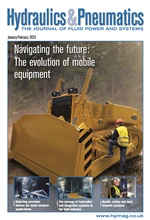Widening the debate on digital transformation

Some countries may be more ahead of the curve than others, but the continuing rise of digitally transforming technologies within the industrial and mobile workplace is going to continue as the manifold business and operational benefits on offer are increasingly recognised. Indeed, three quarters (72%) of employers believe technology helps to improve workflow and overall staff productivity. This is according to a recent survey of 2000 professionals carried out by staffing business Walters People. Other reasons companies state the case for a more tech-centric workplace include the potential to strengthen collaboration between staff and improve communications (58%), remain competitive in an increasing digitally-focused global environment (54%), help track results and streamline decision-making (22%), and attract and retain talent (17%).
However, it would appear a high number of people believe workplace technology is negatively impacting their work-life balance, with some 42% of British professionals holding this view. Moreover, 60% of older workers fear the introduction of new technologies while 34% of millennials state some older workers’ lack of understanding of new technology is the chief cause of conflict in the workplace. Younger workers are also becoming frustrated at using outdated technology (33%). While half (44%) of millennials state that employers should adopt the latest technologies, this is significantly lower for generation X (25%) and baby boomers (11%). Indeed, according to the research a substantial 60% of generation X and baby boomers admitted to fearing the introduction of new technologies, with 35% stating they are yet to get a full grasp of current technologies used in the workplace. Millennial professionals are also distinct from their older colleagues in their attitudes towards social media. Almost 40% of millennials felt that employers should actively encourage workers to incorporate social media into their work, compared with less than a quarter (24%) of generation X and just 10% of baby boomers.
With the aim of engendering more harmony in the workplace concerning new technologies, while also improving the rate of adoption, Lucy Bisset, director of Walters People Manchester, offers a few tips. These include encouraging employees to submit their opinions about the technology you want to introduce. “This will help the idea gain acceptance by the people who will use it the most,” she says. “You will also need to ensure that each employee who will be affected, understands how the changes will help them in the long run. Involve each of them in every stage of decision making and let them know the importance of it to business growth. Acceptance of new technology in the workplace is a crucial stage for effective performance and accurate feedback.
Bisset also suggests appointing champions. “They can help convince reluctant coworkers where no one else can,” she says. “The champions act as the early adopters of the technology and can aid in the training and the support of other team members. The more individuals that fall within this category of genuine champion, the easier the transition will be to company or department-wide acceptance.” Additionally, Bisset stresses the importance of evaluating the performance of the technology. “When introducing new technology to your organisation, it is crucial to measure the performance, results, the ROI, the impact on the users and so on,” she says. “The measures can then be deployed to identify the minor and major problem areas and how to make it work more efficiently for your business procedures. Set the tracks so as to be able to compare the performance before and after the introduction. Be open to the feedback and criticisms from your employees and ensure the suitable environment for their candid feedback.” By embracing a more open discussion culture among employers and employees regarding newer technologies, a greater level of consensus is more likely to be achievable. This can only help to improve morale and to ensure the technology in question is understood and utilised in the most efficient way possible.
Ed Holden Editor
-
Smart Manufacturing & Engineering Week
05 - 06 June, 2024
NEC, Birmingham -
HILLHEAD 2024
25 June, 2024, 9:00 - 27 June, 2024, 16:00
Hillhead Quarry, Buxton, Derbyshire UK










